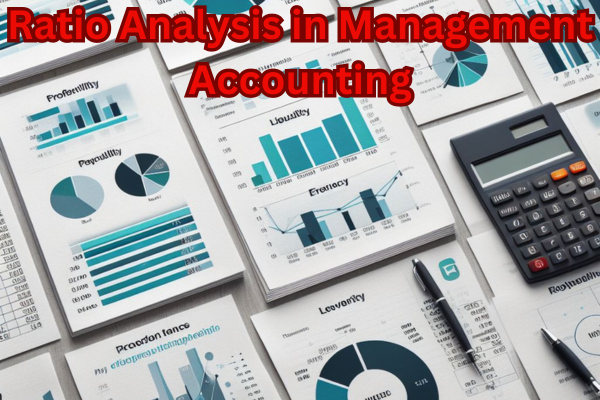Contents
Introduction of Ratio Analysis in Management Accounting
Ratio analysis in administration accounting is like a magnifying glass for businesses. It’s a device that helps them look at their monetary health, apprehend their strengths and weaknesses, and make knowledgeable decisions. In this complete guide, we are going to discover the world of ratio analysis, breaking down complicated economic jargon into simple, easy-to-understand terms.
We’ll exhibit to you how organizations use ratios to measure performance, control resources, and design for the future. Whether you are a commercial enterprise owner, student, or simply curious about the monetary world, this information will demystify ratio analysis and disclose its significance in the realm of administration accounting.
What is Ratio Analysis?
Ratio evaluation is a technique for evaluating a company’s economic overall performance and health. It entails evaluating a variety of monetary metrics to discover insights about the organization’s operations. These metrics are expressed as ratios, making it less difficult to draw close and evaluate monetary data.
Why is Ratio Analysis Important?
Ratio evaluation is integral due to the fact it gives a picture of a company’s monetary situation. It aids in decision-making, highlights areas for improvement, and helps stakeholders, like buyers and creditors, examine a company’s threat and potential.
Types of Ratios
This chapter dives into a number of sorts of ratios, consisting of liquidity ratios, profitability ratios, effectivity ratios, and solvency ratios. Each kind serves a particular motive in evaluating a company’s monetary performance.
1. Using Liquidity Ratios
Liquidity ratios examine a company’s capacity to meet nonpermanent obligations. We’ll give an explanation for the two fundamental liquidity ratios, the modern-day ratio and the rapid ratio, and how they assist the administration in making certain the enterprise has sufficient money to cover instantaneous needs.
2. Profitability Ratios Unveiled
Profitability ratios divulge a company’s capacity to generate income relative to its revenue, assets, and equity. We’ll discover key ratios like the gross income margin, working margin, and return on fairness (ROE).
3. Efficiency Ratios and Operational Excellence
Efficiency ratios measure how correctly a corporation makes use of its belongings and sources to generate income and profits. We’ll talk about stock turnover, debt receivable turnover, and the asset turnover ratio.
4. Solvency Ratios and Financial Stability
Solvency ratios centre attention on a company’s long-term monetary fitness and its capability to meet long-term obligations. We’ll discover the debt-to-equity ratio, pastime coverage ratio, and more.
5. Practical Applications of Ratio Analysis
This chapter illustrates how groups use ratio evaluation in real-world scenarios, from evaluating funding possibilities to benchmarking toward competitors.
6. Common Pitfalls and Limitations
While ratio evaluation is powerful, it is now not beside obstacles and viable pitfalls. We’ll discover these, along with enterprise editions and the significance of the use of ratios in context.
Ratio Analysis Important in Management Accounting
1. Performance Assessment
Ratio evaluation offers a photograph of a company’s monetary health. By evaluating profitability, liquidity, and effectivity ratios, administration accountants can gauge how nicely the enterprise is performing. For instance, the Return on Investment (ROI) ratio helps determine the profitability of investments. The greater the ROI, the higher the funding is for the business.
2. Informed Decision-Making
Management accountants count numbers on ratio evaluation to make knowledgeable decisions. For example, the Debt-to-Equity ratio displays a company’s debt management. An excessive ratio may also point out immoderate borrowing, probably main to monetary instability. Management can use these statistics to regulate economic strategies.
3. Trend Analysis
One of the strengths of ratio evaluation is its capacity to tune developments over time. By evaluating ratios throughout more than one period, administration accountants can become aware of patterns and make vital adjustments. For instance, a declining Gross Profit Margin ratio may also sign troubles with pricing or manufacturing costs.
Conclusion
In the world of administration accounting, ratio evaluation is your compass. It courses you via the monetary landscape, supporting you in making knowledgeable choices and charting a route for success. By perception the a variety of sorts of ratios and their applications, you can liberate the insights hidden inside economic statements. Ratio evaluation is not simply for accountants; it is a treasured device for commercial enterprise owners, investors, and absolutely everyone looking to apprehend the economic fitness of an organization. So, whether or not you are exploring possible investments or fine-tuning your commercial enterprise strategy, ratio evaluation is your dependent accomplice in the ride of monetary management.

Leave a Reply